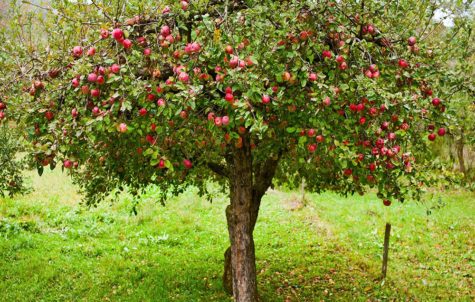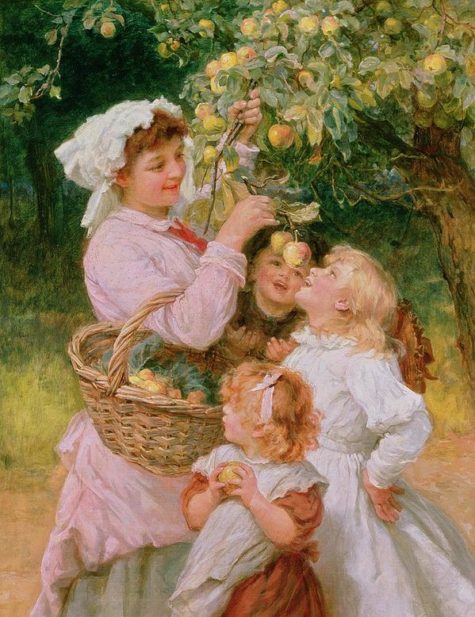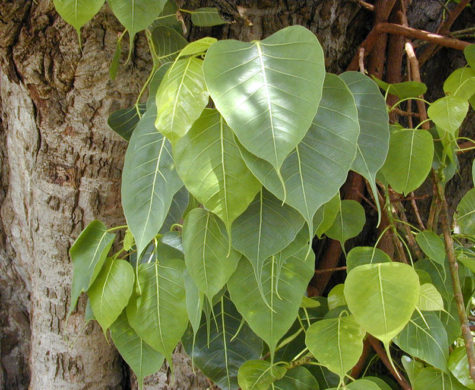World Tree
Apple Tree Symbolism and Lore
The apple tree seems to have been regarded as holy or magickal from very early times, and in almost every country in which it grows.
In ancient Ireland, it was one of the three things that could only be paid for by living objects, the others being a hazel bush and a sacred grove.
For Celtic people, the apple tree symbolized the World Tree, the axis of the Universe. They considered the apple the most magickal of fruits, a fruit of immortality and prophecy.
It grew in the Celtic Paradise, where the hills were clothed with trees that bore fruit and blossom together. The mysterious land to which King Arthur was taken for the healing of his wounds was the Vale of Avalon, the Apple Vale. The mythical Isle of Avalon, meaning orchard (from afal, the old Welsh word for apple) is the resting place of Celtic kings and heroes, and one of the places where King Arthur is meant to wait until he is needed to rise once more to protect his people.
The apple tree is a tree of the Underworld, a tree of immortality, and sacred to Apollo. At Samhain or Halloween, the time of the apple harvest, the fruit has a large part to play in the rituals and celebrations, including divinatory practices.
Old laborers in Herefordshire regarded the destruction of an apple orchard as an almost sacrilegious act. It was commonly said there that if an orchard was destroyed to plant a hop yard in its place, the latter would never pay the cost of cultivation.
At that time there was also a custom whereby, if a man wanted to enclose a piece of common land, he had to plant an apple tree on it. The lord of the manor preserved his rights over the enclosed land by extracting an annual tribute of the fruit.
Many omens and charms are, or were, associated with apple trees. Here are some of them:
- If the sun shines through the trees on Christmas morning (or in some districts on Easter morning) is is a sign of a good crop to come and a prosperous year for the owner of the orchard.
- The fruit must be blessed by rain on St. Peter’s or St. Swithin’s Day, and in some districts it is said to be unfit to eat until after this has happened.
- Blossoms appearing in autumn is a death omen for someone in the owner’s family, and especially so if the flowers come while there is still fruit on the branches.
- A well known couplet says:
A bloom on the tree when the apples are ripe
Is a sure termination of somebody’s life.
If, when the fruit is picked, an apple is left behind and hangs there until Spring comes round again, a death is foretold.
There was, however, a Yorkshire variant of this belief. In his Folk-Lore of East Yorkshire (1890) John Nicholson tells us that it was sometimes thought unlucky to strip the tree completely. An apple or two, even if only the deformed or inaccessible fruit, should be left for the birds. This was the explanation given in his time but, as he points out, the gift may originally have been intended for the fairies, and some even older spirits.
Collected from various sources.
The Banyan Tree
The banyan, or Ficus religiosa, is also known as the vata tree, the bodhi tree, or the Asiatic fig, is one of the trees considered to be the World Tree by the people who revere it. It is considered sacred by the followers of Hinduism, Jainism and Buddhism. In the Bhagavad Gita, Krishna says,
“I am the Peepal tree among the trees, Narada among the sages, Chitraaratha among the Gandharvas, And sage Kapila among the Siddhas.”
This tree is particularly special because the Buddha happened to be sitting underneath one when he was suddenly illumined as to his true nature – the word bodhi means “enlightened.” Although the particular tree under which he was enlightened is no longer living, a cutting was taken in the second century BC by a Sri Lankan princess, and this tree now grows in Anuradhapura in Sri Lanka, where it is the object of pilgrimage. Known as Jaya Sri Maha Bodhi, it is the oldest flowering plant in the world.
Not all Ficus religiosa, (or Banyan trees) can be called a Bodhi Tree. A Bodhi Tree must be able to trace its parent to another Bodhi Tree and the line goes on until the first Bodhi Tree under which Gautama is said to have gained enlightenment.
The banyan can be found anywhere in the world where Buddhism or Hinduism are practiced, and it is often grown near temples. Vishnu, the Hindu God, is often depicted as sitting under a banyan dispensing teachings of philosophy and science to his students.
The tree grows in quite an unusual way with its roots reaching down from its branches which then take hold in the ground. This is why the banyan is sometimes called the “walking tree” or the “tree with many feet.”
The structure of the tree, which is a little like a strange organic building that casts a deep shade, makes it a perfect place to meet, and village councils in India (whose national symbol it is) still meet under these trees to discuss important matters.
The leaves of the banyan move continuously even when the air around is still and no perceptible wind is blowing. This phenomenon can be explained due to the long leaf stalk and the broad leaf structure. However, religious minded people in Hindu/Buddhist religion attribute this movement of the leaves to the fact that “devas” or “gods” reside on these leaves and make it move continuously.
Although it is sacred, it is said to shelter many different kinds of spirits, and so it is considered unlucky to sleep under one at night.
Sadhus (Hindu ascetics) still meditate beneath sacred fig trees, and Hindus do pradakshina (circumambulation, or meditative pacing) around the sacred fig tree as a mark of worship. Usually seven pradakshinas are done around the tree in the morning time chanting “vriksha rajaya namah“, meaning “salutation to the king of trees.”
According to Vedic astrology, the 27 stars (constellations) constituting 12 houses (rasis) and 9 planets are specifically and precisely represented by 27 trees—one for each star. The Bodhi Tree is said to represent Pushya (Western star name γ, δ and θ Cancri in the Cancer constellation).
Sources: Wikipedia
And The Element Encyclopedia of Secret Signs and Symbols
Vertical Line
A line is a dot that went for a walk.
~Paul Klee![]()
Man, alone in the animal kingdom, stands upright, so the vertical line represents the physical symbol of the number One, man striving toward Spirit.
This simple line is the basic shape of the World Tree or Axis Mundi that connects the Heavens, the Earth and the lower regions. It is not only a basic phallic symbol but also signifies the soul that strives for union with the Divine.
The upright line tells us where we are at a precise moment; think of the big hand of the clock, vertically oriented at 12 o’clock.






